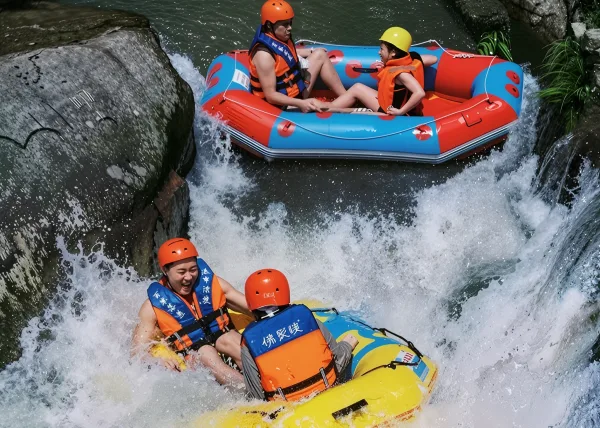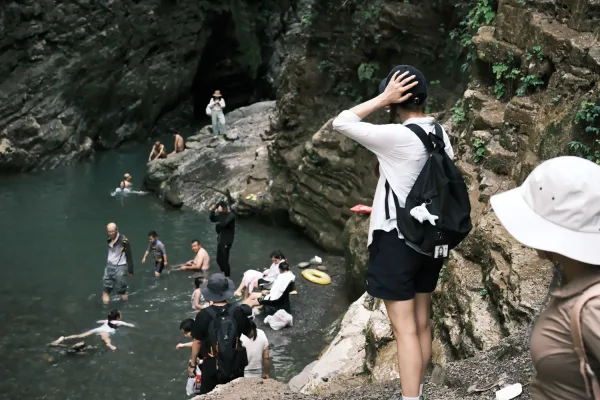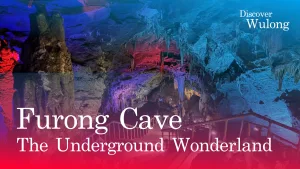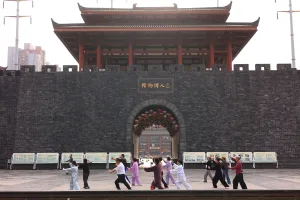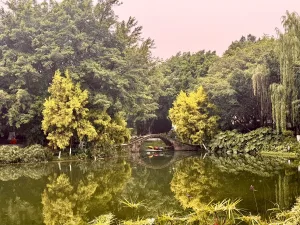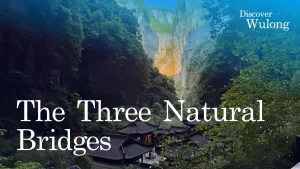Wulong Lanba LAB: The Art of the Land
Wulong Lanba LAB Highlights
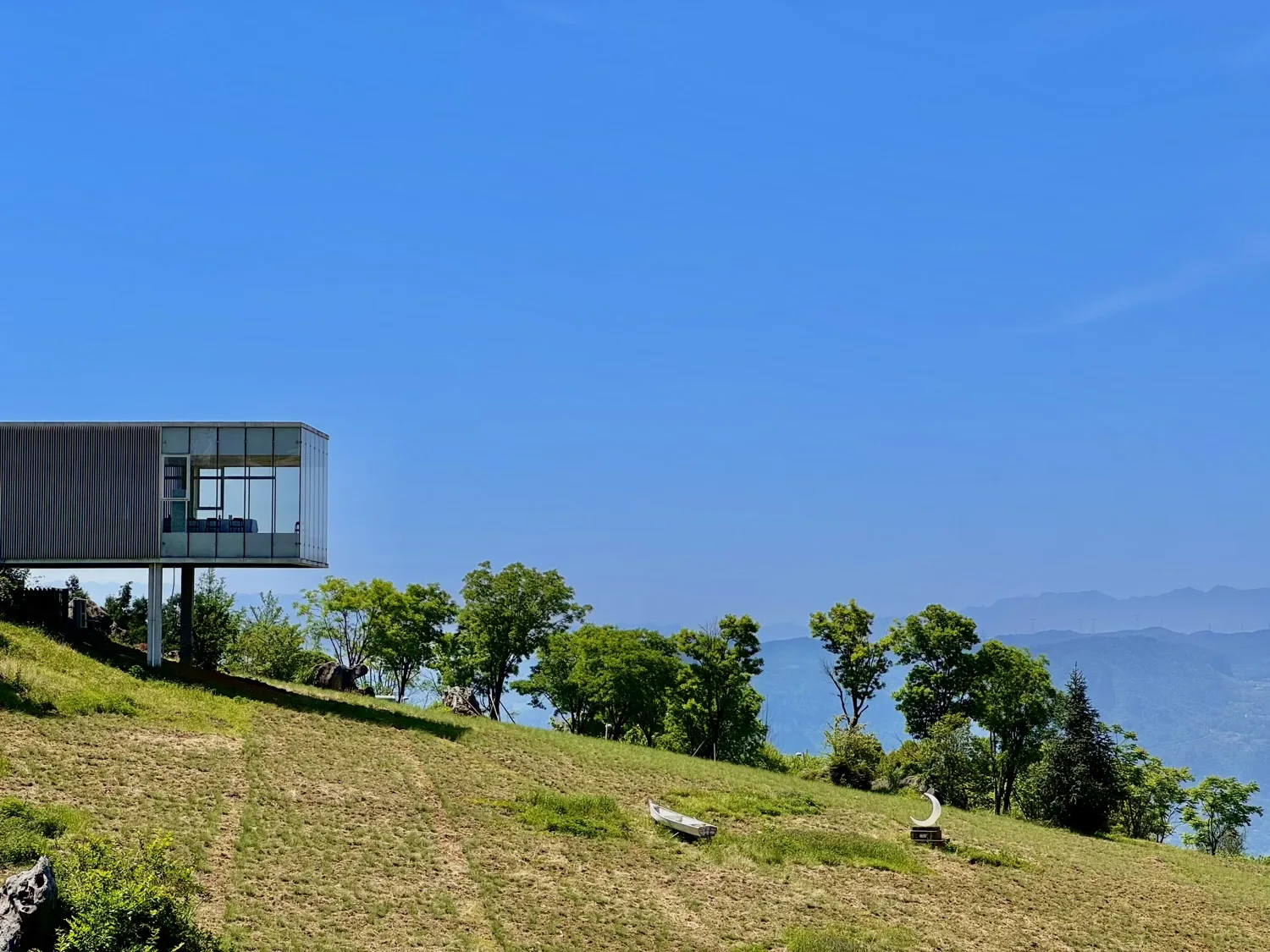
Wulong Lanba LAB, situated near Xiannv County on Xiannv Mountain (Fairy Mountain), Wulong District, is a unique destination where its name—LAB—stands for Life, Art, and Belief.
These three themes define the essence of Wulong Lanba LAB, reflecting the distinctive lifestyle it seeks to inspire.
LAB is an open-air art museum that harmoniously integrates with its natural surroundings, set against the stunning backdrop of the Three Natural Bridges karst mountains and Furong Cave karst caves.
Visitors will encounter a variety of art installations that blend seamlessly with the environment. Featuring works by artists from Germany, Denmark, Japan, the United Kingdom, China, and beyond, LAB showcases diverse cultural perspectives while remaining deeply connected to the spirit of Fairy Mountain.
This destination is perfect for a family outing, a serene retreat to find inner peace, or capturing breathtaking photos. Wulong Lanba LAB is also accessible and welcoming to visitors with mobility needs.
Lanba LAB Operating Hours
Open Today until 4:30 PM
Operating Hours
| Monday | 8:30 AM – 4:30 PM |
| Tuesday | 8:30 AM – 4:30 PM |
| Wednesday | 8:30 AM – 4:30 PM |
| Thursday | 8:30 AM – 4:30 PM |
| Friday | 8:30 AM – 4:30 PM |
| Saturday | 8:30 AM – 4:30 PM |
| Sunday | 8:30 AM – 4:30 PM |
Information is provided for reference only. Do not solely rely on this.
Getting to Lanba LAB
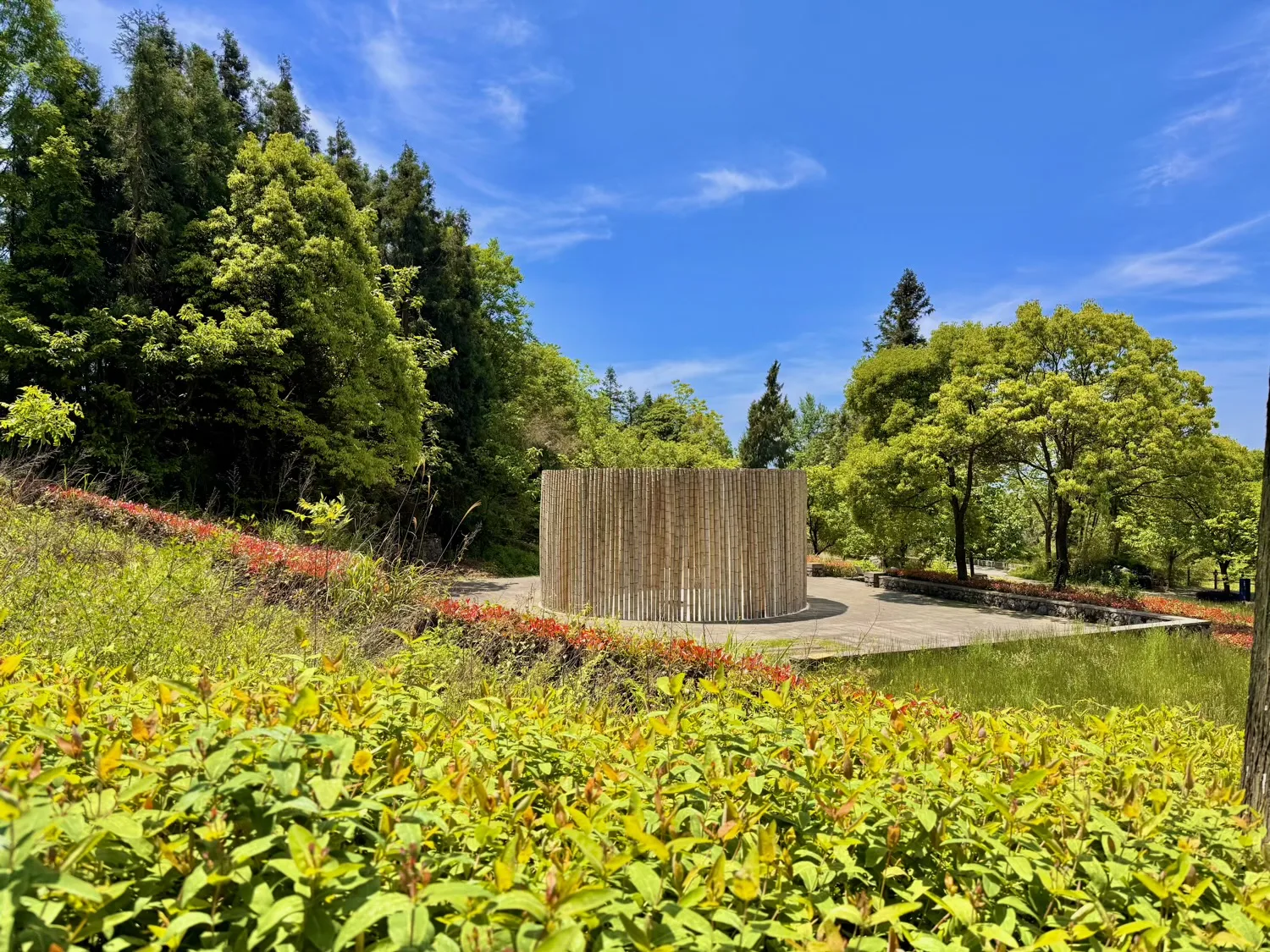
Driving
Destination Station: LAB Tourist Centre
Distance: 177 km
Travel time: 2.5 hours
Driving is recommended to visit this place and the surrounding areas of the Fairy Mountain.
Train
Destination Station: Wulongnan (武隆南)
- G-series High-speed Trains: Take you from Chongqing to Wulongnan in less than 40 minutes.
- C-series High-speed Trains: Take you from Chongqing to Wulongnan in 50 minutes.
- K-series Regular Trains: Take you from Chongqing to Wulong in around 2 hours, but cost you around ¥25.
As Wulong is a popular tourist destination, train tickets can sell out quickly. Book your tickets early to secure your travel plans.
From Wulong Train Station to Lanba LAB
Bus services connect Wulong Train Station to Xiannv County (仙女镇) where you can then travel to Wulong Lanba LAB.
Upon arriving at Wulong Train Station, follow the exit signs. At the ground-level exit gate, you’ll find a pedestrian crossing with a staircase nearby. Descend one floor via the stairs to locate the blue buses operated by the official tourism service, which provide direct transport to the Fairy Mountain Tourist Centre. It should take around 30 minutes to arrive at the tourist centre.
Bus
Chongqing’s Silongli Long-distance Bus Station offers bus services to help you get directly to Fairy Mountain (仙女山), where the tourist center is. From the tourist center, you can purchase tickets to the park. Transportation from the tourist center to the park entrance is included in the ticket.
Silongli Long-distance Bus Station
Price: 35 – 45 CNY
Time: 2 hours
Things to Know Before Visiting Lanba LAB
Hiking
Wulong Lanba LAB offers a delightful and relaxing hiking experience.
Paved concrete paths, complemented by smaller trails, guide visitors through the discovery of captivating artworks scattered across LAB.
Expect to spend 1–2 hours immersing yourself in this scenic and artistic journey.
Viewing
Numerous artworks are scattered along the trails and throughout Wulong Lanba LAB.
To fully experience these creations, refer to our recommended travel routes and top attractions, as some artworks may be partially hidden by foliage or located off the main paths.
Camping
Camping is not permitted at the LAB, however, there are camp sites outside near the LAB.
Pets
Pets and domestic animals, except for service animals, are not permitted inside Wulong Lanba LAB.
Park staff are available to assist with pet care arrangements, or you may choose to leave your pets in your vehicle.
Drone
I successfully flew my drone at Wulong Lanba LAB, as there are no clear signs prohibiting drone use.
You may be able to fly your drone when the park is less crowded. For the best drone photography experience, consider visiting during off-peak times, such as Monday through Wednesday.
Fishing
Fishing is not permitted at Wulong Lanba LAB.
Smoking
Smoking is strictly prohibited in this park.
Facilities at Lanba LAB
Tea
There are tea and coffee shops available inside Wulong Lanba LAB.
Restroom
Restrooms are available across the park.
Accessibility
Well-maintained flat paths ensure smooth navigation for wheelchairs and strollers throughout Wulong Lanba LAB.
Some sections may be slightly hilly, but remain accessible with care.
Parking
Free and paid parking is available outside the LAB Tourist Centre.
Cell Service
Good cell connectivity at the park.
Lanba LAB Ticket
You can purchase a ticket for the Wulong Lanba LAB at the LAB Tourist Centre.
Admission: 50 CNY / person
Viewing Car: 25 CNY / person (optional)
The Best Time to Visit Lanba LAB Ticket
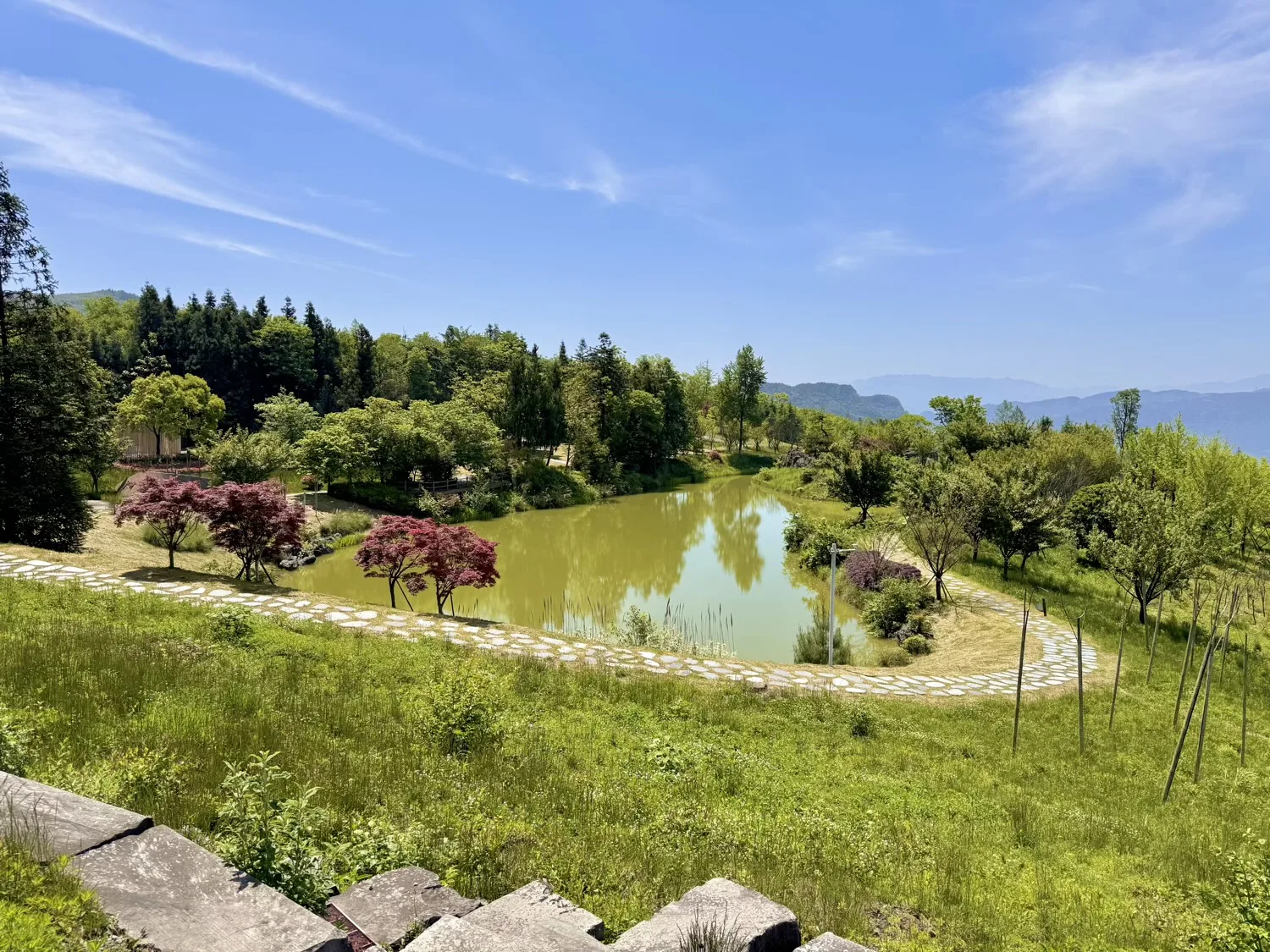
You can access Wulong Lanba LAB all year round.
At Wulong Lanba LAB, visitors can enjoy vibrant floral displays throughout the year:
- March: Peach blossoms, plum blossoms, and cherry blossoms bloom, creating a stunning spring spectacle.
- April to November: Roses and Chinese roses flourish, adding vibrant colours to the park’s trails.
- November to April: Camellias grace the landscape, offering elegant blooms through the cooler months.
Top Attractions at Lanba LAB
The Heart Pavilion
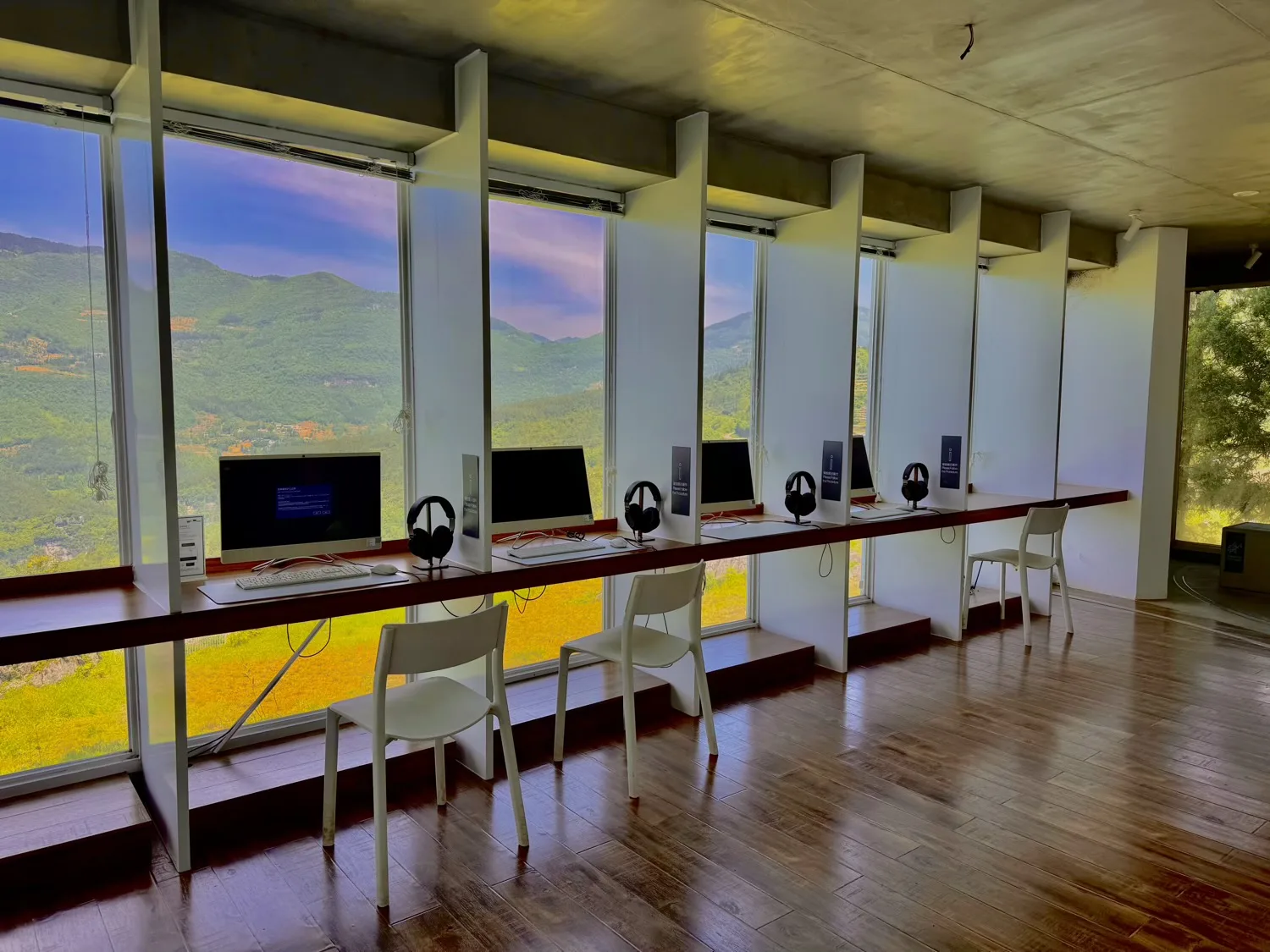
The Heart Pavilion, created by renowned French artist Christian Boltanski, is a unique installation at the Wulong Lanba LAB.
Since 2008, Boltanski has been collecting heartbeat sounds from people worldwide, amassing over 120,000 recordings, which are archived in Japan. This pavilion is his only museum in China.
Boltanski believed that heartbeat sounds embody the spirit of life, with each one uniquely distinct. Visitors from around the world can record their own heartbeat at the pavilion and listen to the heartbeats of others, creating a profound connection across humanity.
The Thomas Giants
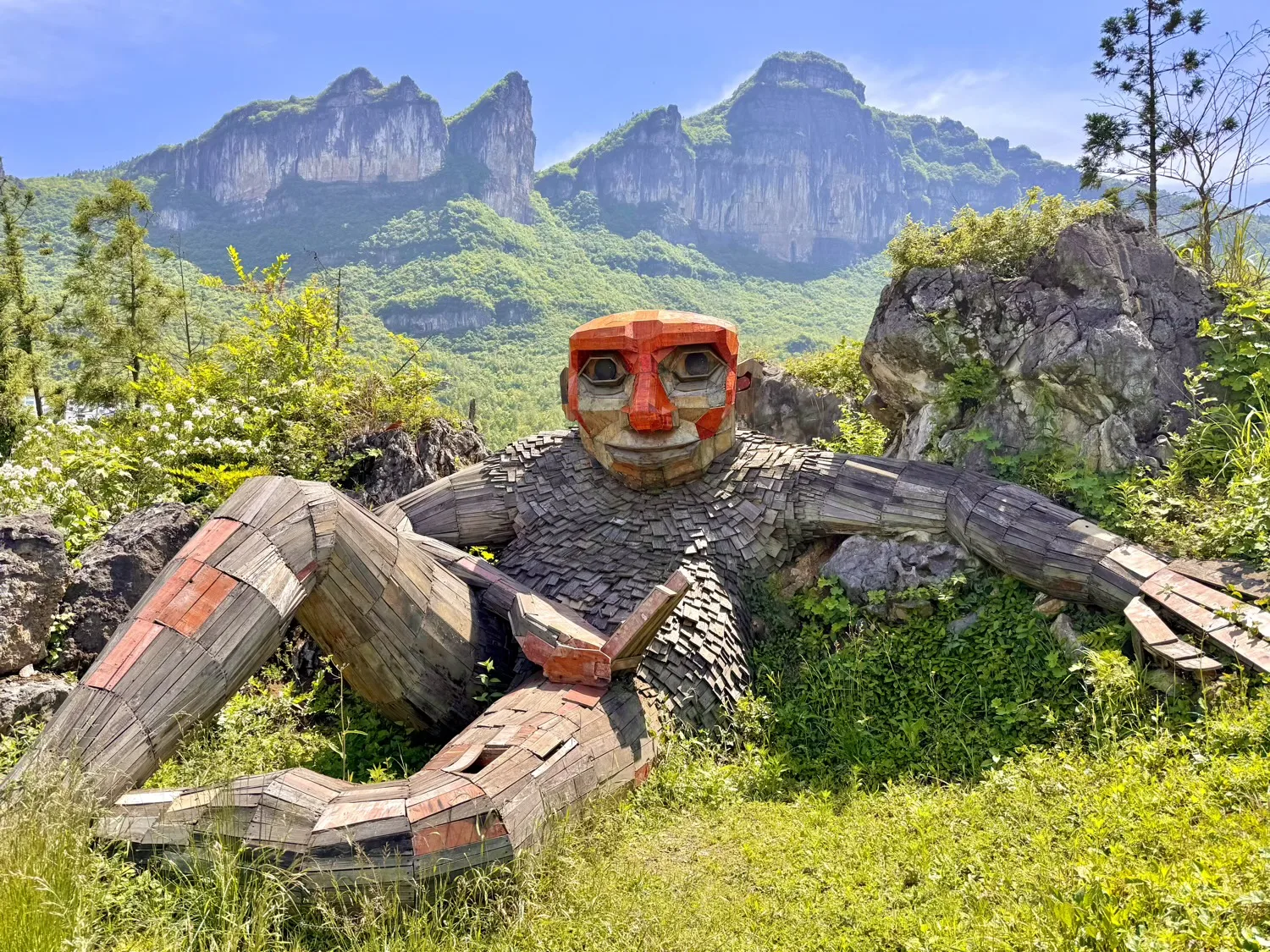
The Path of Love at Wulong Lanba LAB LAB hosts The Great Story of The Little People and The Giant Trolls, also known as the Thomas Giants, created by Danish recycle art activist Thomas Dambo.
Renowned for crafting giant troll sculptures from recycled materials such as scrap wood, old pallets, and debris, Dambo’s whimsical creations inspire environmental awareness and exploration of nature.
His trolls inhabit landscapes across 17 countries, from Denmark to the United States, China, and beyond.
In 2019, Dambo spent a month at Wulong’s Lanba LAB, where he crafted three remarkable troll sculptures, including Marit and Kjeld from the installation It Sounded Like a Mountain Fell.
These works, set amidst the karst wonderland of Wulong, invite visitors to engage with the region’s natural beauty and the artist’s message of sustainability.
The Sound Scenes
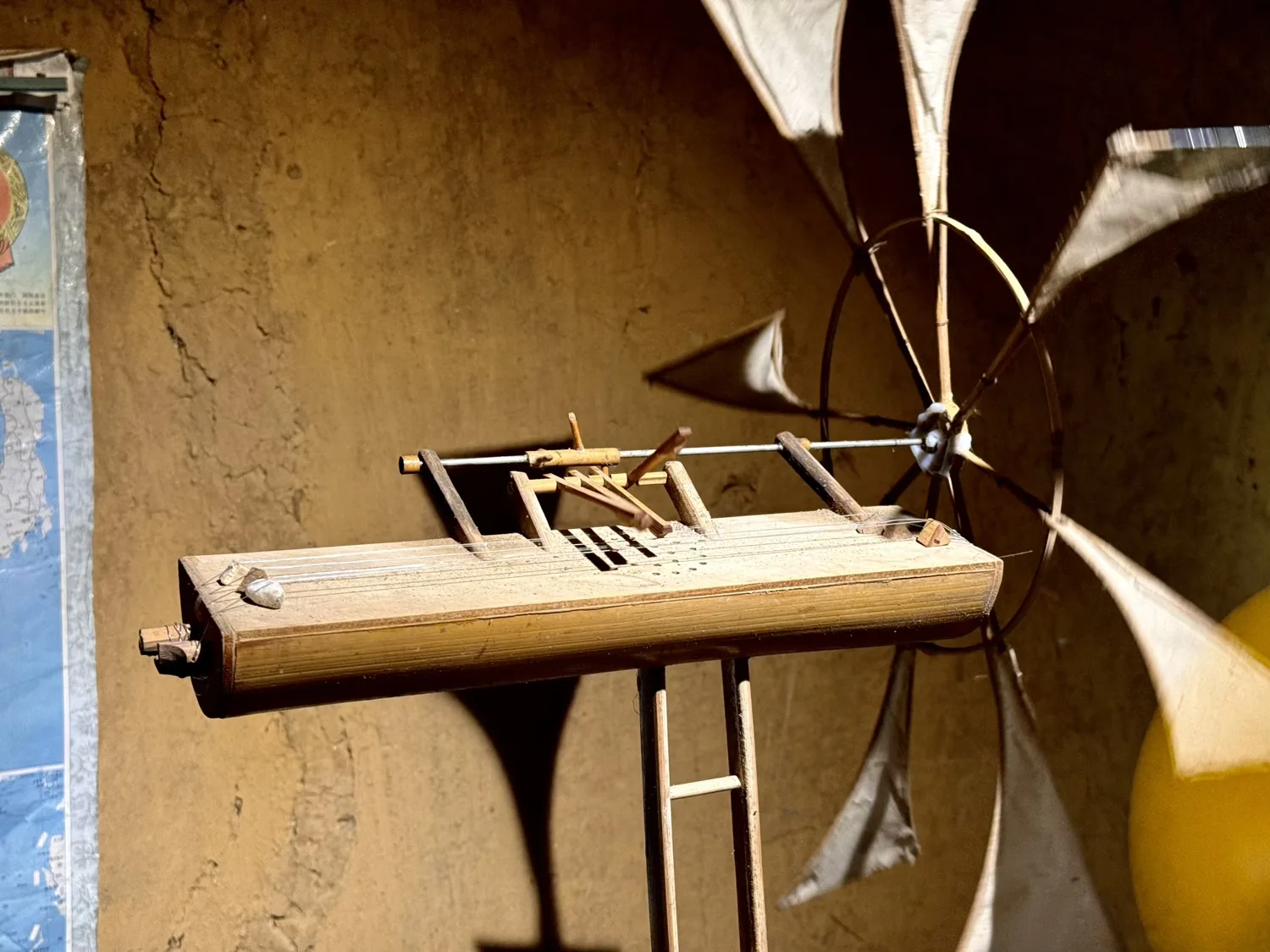
The Sound Scenes, a three-part installation by Japanese sound artist Akinori Matsumoto, comprises the Old House, the Courtyard, and the Lakeside at Wulong Lanba LAB.
The Old House utilizes bamboo sourced from Wulong’s mountains to create a symphony of sounds, blending light, shadow, and their intricate interplay. This immersive experience captures the essence of local life, evoking the sensory rhythms of the region.
The Courtyard, co-designed with local bamboo weaving artisans, celebrates China’s traditional bamboo handicraft. The integration of bamboo art creates a harmonious environment, showcasing cultural heritage alongside contemporary design.
The Lakeside Bamboo Sound Array, crafted in collaboration with local artisans and volunteers, features bamboo structures that resonate with the wind, producing captivating sounds. As visitors stroll along the trail, the simultaneous blend of scenic views and melodic tones creates a dramatic, multisensory effect.
The Calling
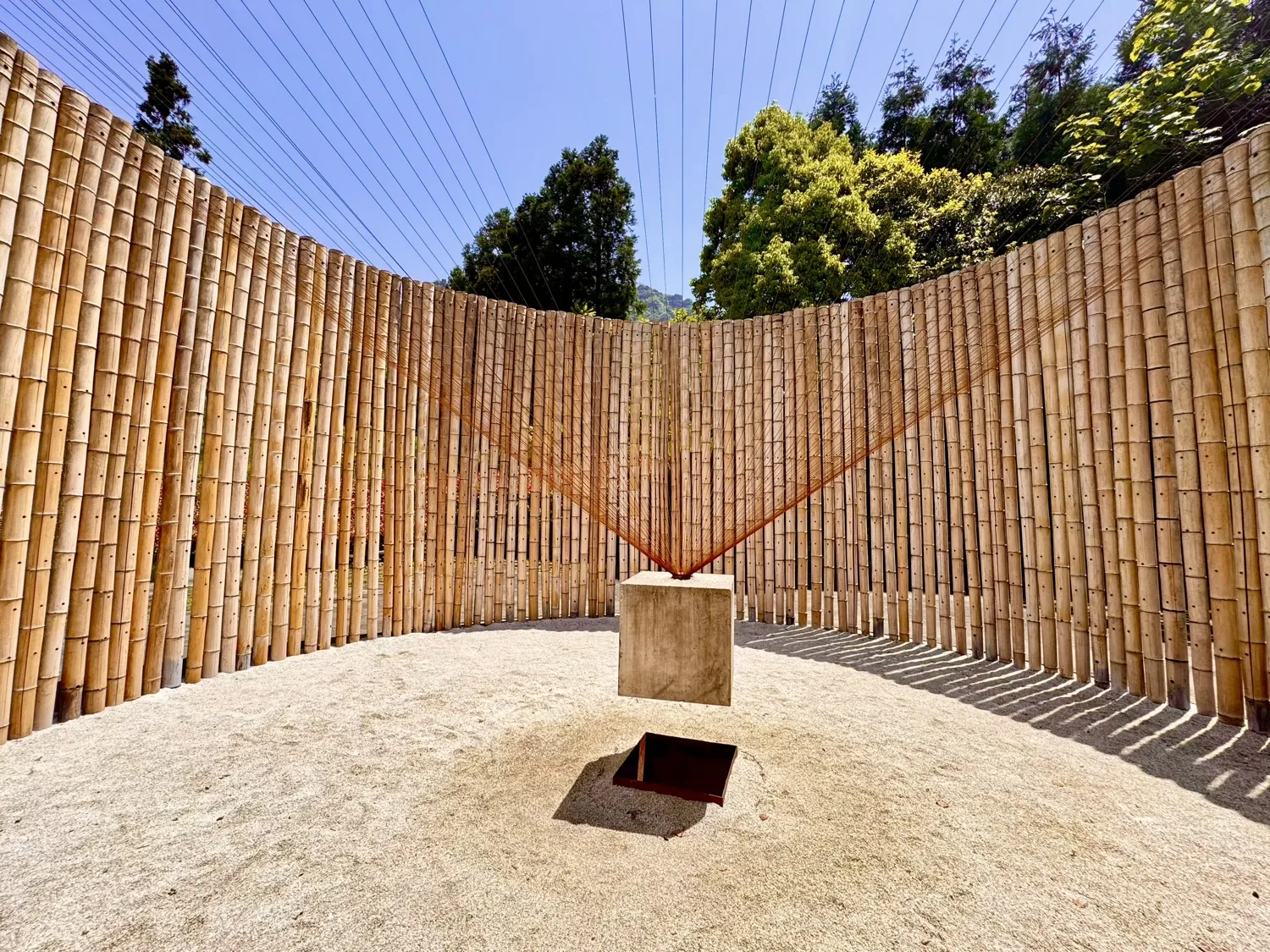
The Calling, created by Chinese artist Zhang Chao, is a striking bamboo installation at Wulong Lanba LAB, forming a cylinder 8.5 meters in diameter and 4.5 meters tall.
From the outside, it appears as a sleek, minimalist structure, with subtle glimpses of its inner world visible through the gaps between bamboo stalks. A narrow entrance allows visitors to slip inside, where the space transforms into a serene, almost ethereal realm.
Inside, a carpet of white sand purifies the environment, creating a stark contrast with a square, dark hole at the center. Above this hole, a concrete cube hangs suspended, tethered to each bamboo stalk by delicate strings.
The cube seems to have been pulled upward from the hole by the bamboo.
As visitors move through the space and pluck the strings with their fingers, bell-like sounds fill the air, evoking a sense of dialogue between the bamboo and the concrete cube.
This interplay of touch, sight, and sound weaves a connected experience, suggesting that these elements are not isolated but part of a living conversation.
Over time, the bell sounds may soften, and gravity may draw the concrete cube back toward the dark hole in the earth, as if destined to be reclaimed. The Calling invites contemplation of impermanence, connection, and the subtle forces that bind us to the world.
Earth Fell From the Sky
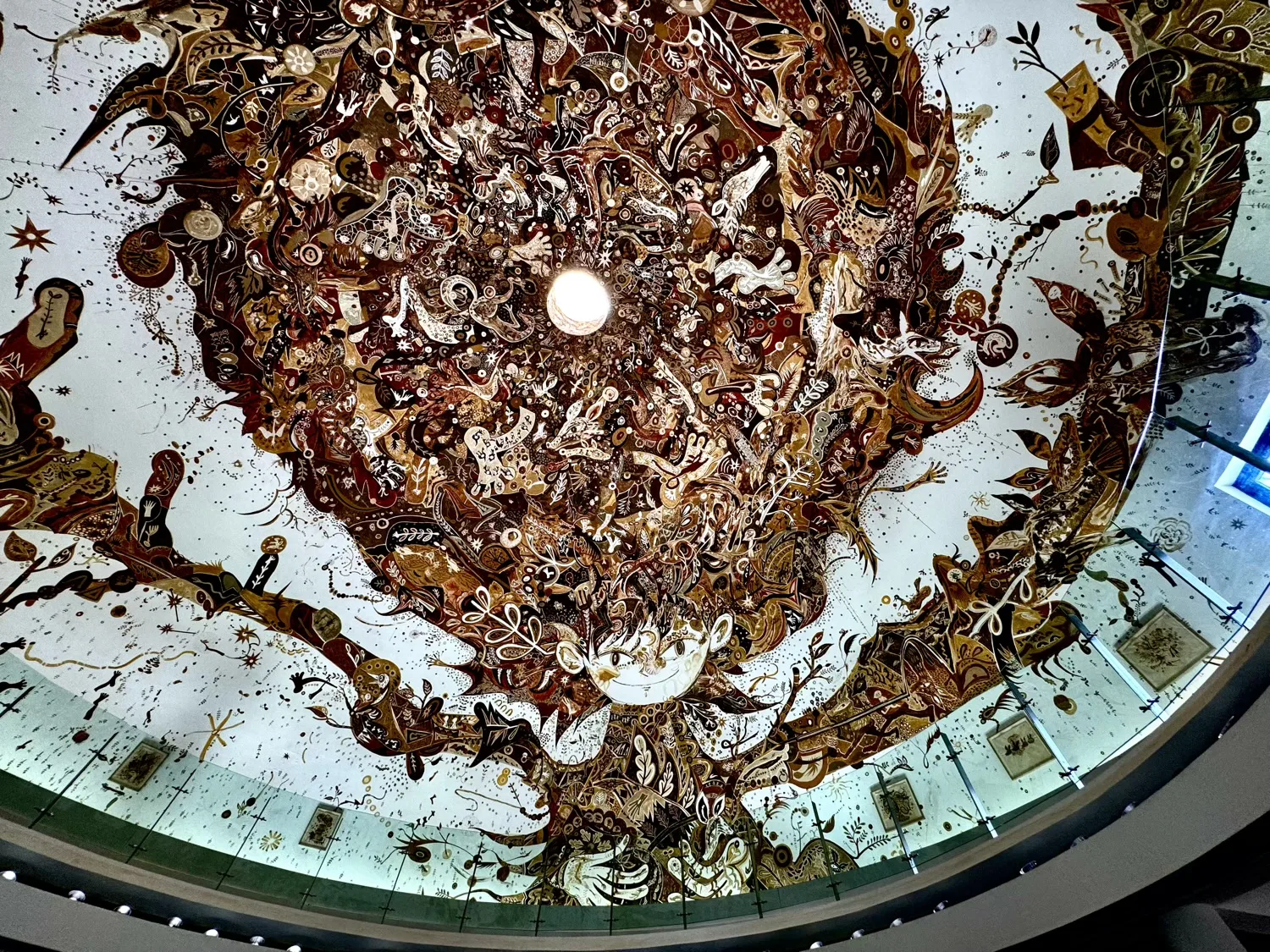
The Earth Fell From the Sky, created by Japanese artist Yusuke Asai, is a monumental mural crafted entirely from the natural soils of Wulong’s mountains, without any artificial colours.
Asai meticulously selected soils to achieve striking contrasts in earthy hues, painting a masterpiece that spans from ground level to over two stories high within a dome.
This abstract artwork, featuring a mythical female figure with outstretched arms intertwined with organic forms resembling imaginary animals, plants, and fluid tribal or geometric shapes, invites varied interpretations depending on the viewer’s perspective.
The mural’s ephemeral nature reflects Asai’s philosophy that art need not be permanent, encouraging a deeper connection with the living essence of soil and the environment.
Recommended Travel Routes for Wulong Lanba LAB
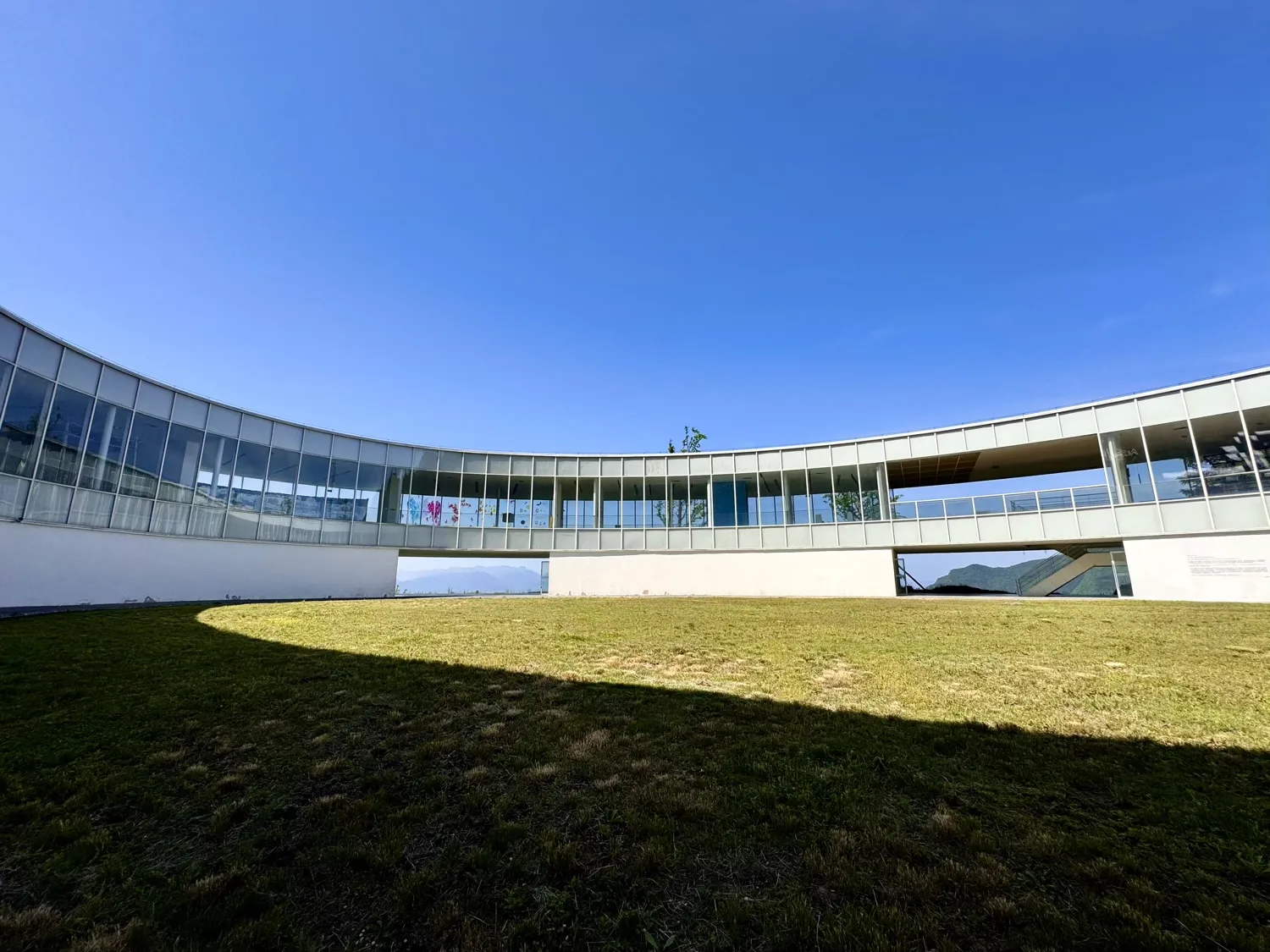
There are many ways to explore the Ferry Mountain LAB. You can refer to our recommended travel routes so you don’t miss any artistic attractions.
- Tourist Centre
- The Tunnel 游光隧道
- Shadow of the Trees 树影
- LAB Art Museum 懒坝美术馆
- Slow Machine Restaurant 老虎机餐厅
- Heart of Pavilion Museum 心跳博物馆
- The Path of Love 爱的小径
- Giant Marrit 巨人玛丽特
- Giant Monster 巨人怪兽
- Giant Kaid 巨人科尔德
- The Floating Island 漂浮的岛屿
- Jingxin Lake 静心湖
- The Sound Scenes 竹音剧院
- The Calling 呼唤
- The Earth Paradise 大地乐园
- The Earth Art Garden 大地艺术花园
- The Zen Culture Park 禅文化园

Discover Chongqing with Haonan!
From mountains to grasslands, Chongqing has something to offer for everyone.
Start planning, find an inspiration, or search for a place.
Or follow us on social media.


